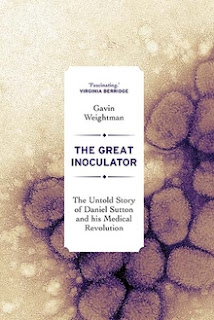David Pearson is a music historian, saxophonist/composer, and educator. He is an adjunct assistant professor in the music department at Lehman College, and earned his

Ph.D. in musicology from the Graduate Center of the City University of New York. As a saxophonist, Pearson has performed modernist and contemporary classical, modal jazz, punk, rap, and more, and currently plays in the Afrofunk band Digital Diaspora.
Pearson applied the “
Page 99 Test” to
Rebel Music in the Triumphant Empire: Punk Rock in the 1990s United States, his first book, and reported the following:
Page 99 might not show everything my book is about, but it does highlight a central element: music analysis of punk, especially of the expressive nuances that made punk songs so meaningful to their audiences. This page comes towards the end of a chapter on punk as propaganda music, and this particular section is devoted to Naked Aggression, one of the seminal political punk bands of the 1990s. It starts in the middle of an analysis of the song “Revolt,” showing the band’s skill at concentrating the message down to a chant-like refrain and punktuating that refrain musically on multiple levels. Then it moves to an analysis of Naked Aggression’s “Religious Fools,” a somewhat atypical punk song in that it uses classical-guitar style figuration and melodious singing in the verses. In any event, the song rocks (check out the refrain!), and Naked Aggression’s musical tirades against Christian fundamentalism unfortunately remain quite relevant to today’s political situation.
From page 99:

Figure 2.23: Chorus and verse riffs from Naked Aggression, “Revolt”
power chord motion. Naked Aggression heightens the energy at the end of this already high-octane chorus by increasing the rhythmic motion of the riff, rapidly alternating D and C power chords under an even-rhythm chant of the typical punk sentiment, “We must resist authority.” The verses that follow (if verse is the right word here) use a similar strategy with a different musical feel. The KSA is cut in half, a tresillo-rhythm groove emerges, and the riff starts off more subdued by virtue of the palm-muted guitar. But in each verse, as the lyrics culminate in a repeated chant, the power chords ring out rather than being palm-muted on the pitch D that begins each bar, with the drums increasing in dynamics and activity for these chants. Thus each time the song’s message is boiled down to its simplest and direct form, the music is brought to a peak of intensity. While this simplicity of message risked becoming cliché, and Naked Aggression was criticized for this in some record reviews, the forward momentum leading to culmination in song structures, as well as expressive nuances such as slight variations in guitar strumming, are what made this simplicity effective as propaganda music.
Besides this reliance on simplicity and straightforward hardcore punk style, some songs delineated Naked Aggression from standard formulas by putting Phil Suchomel’s and Kirsten Patches’ backgrounds in classical music to use, with “Religious Lies” providing one salient example. The refrain section, shown in figure 2.24, displays the band’s propensity for cross-rhythmic groove, with its E-minor riff and vocal chant—“Re-li-gious fools want to con-trol our lives, fuck them!”—in a 3+3+3+3+2+2 rhythmic pattern.
The verses, by contrast, take on an entirely different character than the emphatic accents of the refrain, as shown in figure 2.25. While the bass plays an F♯ –D–E (i–♭VI–♭VII) progression accompanied by a drumbeat looser than that of the chorus and emphasizing the arrival of each new root, the guitar plays figuration betraying Phil Suchomel’s training in classical guitar. Rather than yelling, Kirsten Patches uses a softer timbre that she would have cultivated in her choir days and delivers each vocal line with far more melodic motion than is the norm in punk (when punk vocalists do “sing,” they usually just follow the root motion).
In this and prior examples, Naked Aggression used changes in key and distinctions between major and minor chords in a way far different from most punk bands, with different sections in contrasting keys, the guitar figuration providing clear major or
One of the great joys of writing this book was that I interviewed a few punk musicians, including the vocalist of Naked Aggression, Kirsten Patches. Their words and ideas became central to the narrative of the book, alongside lots of quotes from punk zines. It was tremendous fun going back to the music after I had done my interviews, transcribing the guitar riffs, and thinking about how the musical details were part of punk conceptions of how to convey a strident message. The idea of “propaganda music” is generally considered in the negative sense in the United States, largely owing to Cold War narratives. But in punk, there was a very real sense of trying to come at people with a strong political message and move audiences to act on those political messages. I hope my music analysis conveys a sense of how much thought and heart went into these songs, and that people who love this music like I do will appreciate my explanations of what makes these punk songs connect with us on a visceral level.
Visit
David Pearson's website.
--Marshal Zeringue


























